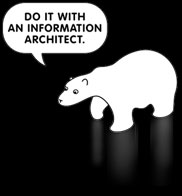Ethnographie
Auf harvardbusiness.org ist neulich diese kurze Betrachtung vom Stellenwert der Ethnographie in Unternehmen erschienen: Ethnographic Research: A Key to Strategy.
Ethnography is the branch of anthropology that involves trying to understand how people live their lives. Unlike traditional market researchers, who ask specific, highly practical questions, anthropological researchers visit consumers in their homes or offices to observe and listen in a nondirected way. Our goal is to see people’s behavior on their terms, not ours.
In der Ethnographie dokumentiert man ja die Beobachtung von Menschen - ganz allgemein gesagt. Die Ethnographie ist also, ohne dass viele es wissen, ein zentraler Bestandteil unserer Arbeit als Informationsarchitekten.















